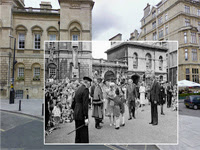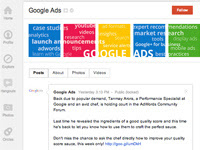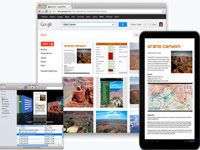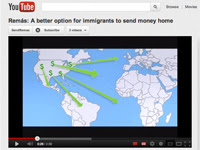Google for Nonprofits Newsletter - April 2012
36 views
Skip to first unread message
Leslie Hernandez
May 1, 2012, 8:31:29 PM5/1/12
to googlefor...@googlegroups.com
|
| ||||||||||
| Google for Nonprofits Newsletter - April 2012 | ||||||||||
|
| ||||||||||
| May 1, 2012 | ||||||||||
| ||||||||||
| ||||||||||
| Google For Nonprofits Training at NTEN Conference On April 2nd, the Google for Nonprofits team participated in NTEN’s annual Nonprofit Technology Conference. We enjoyed hosting a free training session for participants on a variety of Google products. Videos from those trainings will be posted on YouTube and announced on our Google+ page soon. Read on to get updates on Google+, Google Earth Outreach and more. | ||||||||||
| ||||||||||
| ||||||||||
| ||||||||||
| ||||||||||
| ||||||||||
| ||||||||||
| Q. Why is Earth Outreach Important for Nonprofits? A. We find that when nonprofits can visualize complex problems in a geographic context and share that map visualization with stakeholders, everyone can get on the same page about what the issues and impacts really are. With Google's mapping tools, nonprofits can collect, host, analyze, visualize and publish map data using the power of the cloud. Google Earth Outreach exists to help provide nonprofits with the knowledge and resources they need to use Google's mapping tools to improve operations, visualize their cause and tell their story in Google Earth and Maps. Q. Do you have any tips for an organization that's just getting started? A. If I worked at an organization new to Google's mapping tools and I wanted to learn more, I would head to the Google Earth Outreach website. Our website recently received a visual makeover and we've added a ton of helpful new resources. For starters, you can now get anoverview of all the mapping tools that Google offers. Then if you'd like to learn about real-life examples of how nonprofits have used these tools for public benefit, you can explore our case studies. Once you've identified a mapping tool that you're interested in, you can learn how to use it with our detailed tutorials and or apply for a software grant if you decide you need the tool's premium features. Q. Can you share any cool stories of nonprofit organizations using Earth Outreach? A. One of my favorite stories of nonprofit organizations that Google Earth Outreach works with is The HALO Trust, the world’s oldest, largest and most successful humanitarian landmine clearance agency. HALO uses Google Earth for minefield survey (the process of identifying and mapping mined areas), data validation and to produce maps for donors, governments, and other NGOs. They also use the satellite imagery in Google Earth to help identify and map the mined areas, such as mined power pylons in Mozambique. Power pylons transporting energy from South Africa to Mozambique were mined during the civil conflict. The mined pylons ran through populated areas and as such, posed a serious threat to locals living nearby. Google Earth was used for the initial mapping of 200 power pylons along a distance of 80 kilometers. HALO staff were able to identify the mined pylons that were clearly visible from Google Earth’s imagery. This imagery showed that the area within 20-30 meters from the pylons was not cultivated, suggesting the presence of landmines. Being able to use Google Earth to create this map saved HALO significant time and effort. To learn more about The HALO Trust's use of Google Earth, check out their case study on our website. Q. Where can nonprofits go to find resources and support for Earth Outreach? A. As I already mentioned, the best place to go for resources and support is the Google Earth Outreach website. To stay connected with the very latest new, you can also follow us on Twitter or sign up for our mailing list. For nonprofits looking for additional training beyond our tutorials, keep an eye on our events calendar and check out the full set of training materials available for download on our website. If you have technical question not answered in our materials, ask it on the Google Earth Nonprofit Outreach / Education help forum. |
||||||||||
| ||||||||||
|
Share your story! Have you had a great experience with a Google product that you'd like to share? Tell us about it. |
||||||||||
| ||||||||||
| If someone sent you this email and you’d like to join our mailing list, click here. | ||||||||||
|
Reach more donors | Improve operations | Raise awareness Make a change: google.com/nonprofits | ||||||||||
| 2012 Google Inc. All Rights Reserved. Google and the Google logo are trademarks of Google Inc. www.google.com 1600 Amphitheatre Parkway, Mountain View, CA 94043 |
Reply all
Reply to author
Forward
0 new messages







